Causes of Runner's Knee
Knee pain generally comes from excessive compression force, such as a sudden running volume or intensity increase (e.g. heavy hill running without adaptation) with other risk factors being weak or restricted glutes, hips, quads, and/or ankle mobility. We will examine each of these in turn below.
A. Volume or Intensity Increase
Tissue takes time to adapt and get stronger, so if you persistently push it beyond its limits of recovery then you will get knee discomfort or injury. This not only occurs from increasing intensity too quickly in training, but also from doing too much too soon after having taken time off, such as for travel, injury, or sickness, during which the tissue has weakened from inactivity.
QUESTIONS:
- Did I recently change my running program?
- Do I allow adequate rest in my running program?
- Do I participate in other activities that may be stressing the knee (e.g. basketball, tennis)?
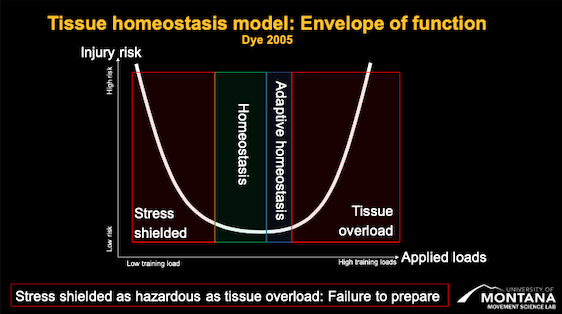
This “U” shape graph indicates Injury Risk (Vertical/ Y-Axis) and Load (Horizontal/ X-Axis). If you don’t train much (low load), your risk of injury is high due to the low resilience of the tissue. If you are training a lot, your risk for injury is also high due to potential overload. The middle zone provides the lowest risk of injury. To increase load capacity, you will have to move toward the higher load zone, but the key is to do so progressively to allow the tissue to adapt (note the impact force on the knee in the graph below). This will be addressed further in the conditioning and training portions of ARC Running.
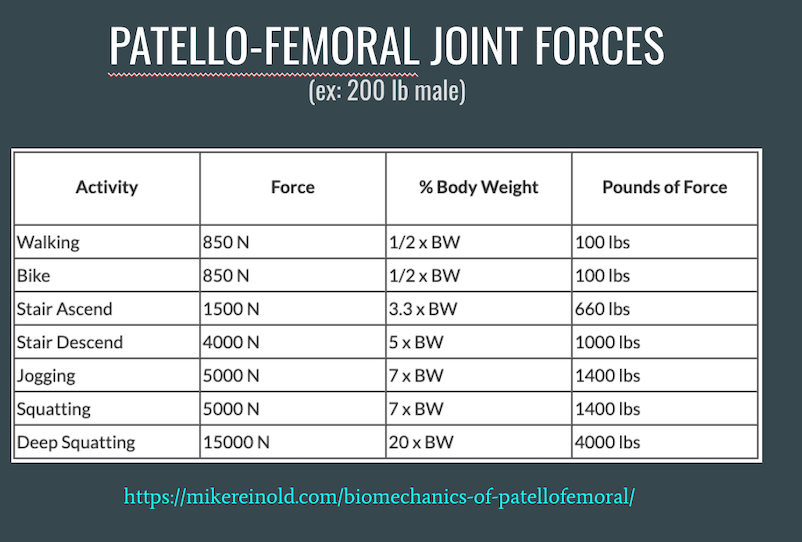
B. Glutes & Hips
With every step, and thereby every load on our legs, the glutes and hips are active in preventing the knee from caving inwards. If the knee collapses too much, more compression and shearing force is being placed on the knee. Repetition of this stress often leads to pain and even injury.
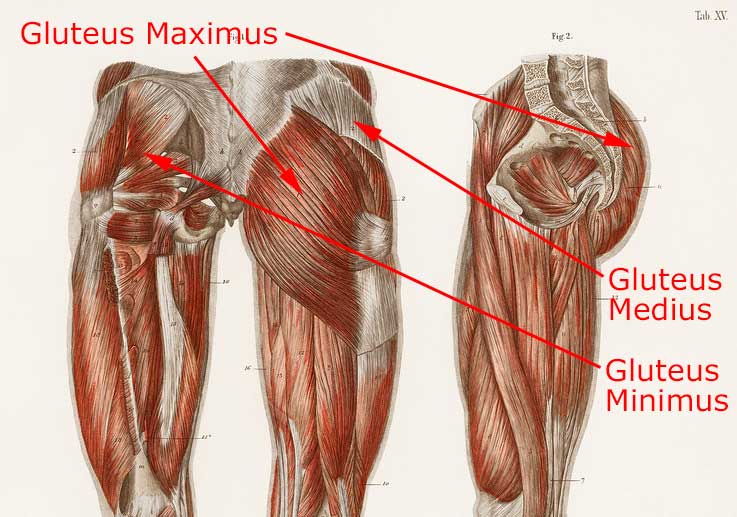
ASSESSMENT TESTS:
Side Planks
If you can hold for 90 seconds, you are good. Less than 90 seconds indicates weakness in the side of the hip, as does trunk rotation or dipping hips that break your initial position.
Instructions: Elbows aligned with shoulders, come up on your side. Keep your body straight throughout the duration of the test. The test is complete when your hips begin to drop, you begin to rotate, or you get too tired to continue.
Single Leg Glute Bridge
If you can hold for 60 seconds, you are good. Less than 60 seconds indicates weakness in the glutes, as does an inability to maintain a level body/ hip height and/or experiencing trunk rotation while trying to maintain the position.
Instructions: On your back, bring your hips up with arms across your chest. Hold your body level throughout the duration of the test. The test is complete when your hips begin to drop, you begin to rotate, or you get too tired to continue.
Single Leg Squat
Can you squat without the knee wobbling or caving inward? Excessive knee movement or inability to reach a 90-degree squat indicates hip/leg weakness or motor control deficits.
Instructions: On one leg, begin to squat down by bringing your hips back and then bending your knee. Look to see if the knee is aligned with the middle of your foot throughout the duration of the movement.
Running Assessment
When you run, do your legs run parallel or cross a midline? If your leg crosses your body excessively (across midline), this can indicate that more pressure is being placed on your knees from your running form.
Instructions: Notice yourself by using a track. Do your feet cross the midline when you run? (A friend may be able to see this better than you.)
Side Planks
If you can hold for 90 seconds, you are good. Less than 90 seconds indicates weakness in the side of the hip, as does trunk rotation or dipping hips that break your initial position.
Instructions: Elbows aligned with shoulders, come up on your side. Keep your body straight throughout the duration of the test. The test is complete when your hips begin to drop, you begin to rotate, or you get too tired to continue.
Single Leg Glute Bridge
If you can hold for 60 seconds, you are good. Less than 60 seconds indicates weakness in the glutes, as does an inability to maintain a level body/ hip height and/or experiencing trunk rotation while trying to maintain the position.
Instructions: On your back, bring your hips up with arms across your chest. Hold your body level throughout the duration of the test. The test is complete when your hips begin to drop, you begin to rotate, or you get too tired to continue.
Single Leg Squat
Can you squat without the knee wobbling or caving inward? Excessive knee movement or inability to reach a 90-degree squat indicates hip/leg weakness or motor control deficits.
Instructions: On one leg, begin to squat down by bringing your hips back and then bending your knee. Look to see if the knee is aligned with the middle of your foot throughout the duration of the movement.
Running Assessment
When you run, do your legs run parallel or cross a midline? If your leg crosses your body excessively (across midline), this can indicate that more pressure is being placed on your knees from your running form.
Instructions: Notice yourself by using a track. Do your feet cross the midline when you run? (A friend may be able to see this better than you.)
C. Quads
Weakness and restriction (tightness) in the quadriceps are other factors in contributing to knee pain. The quads are a group of four large muscles that mostly start from the back of the upper leg bone (femur) while inserting via the patella to the lower leg bone (tibia). With each running step, there is significant force that has to be dissipated. If the quadriceps are weak, the force will transmit into passive structures like joints and bones. If the quadriceps are restricted, more pressure will be placed on the knee cap with each step.
Note: A common cause for tightness is prolonged sitting, which causes the quadriceps to shorten (e.g. the rectus femoris, which crosses the hip and knee joints).
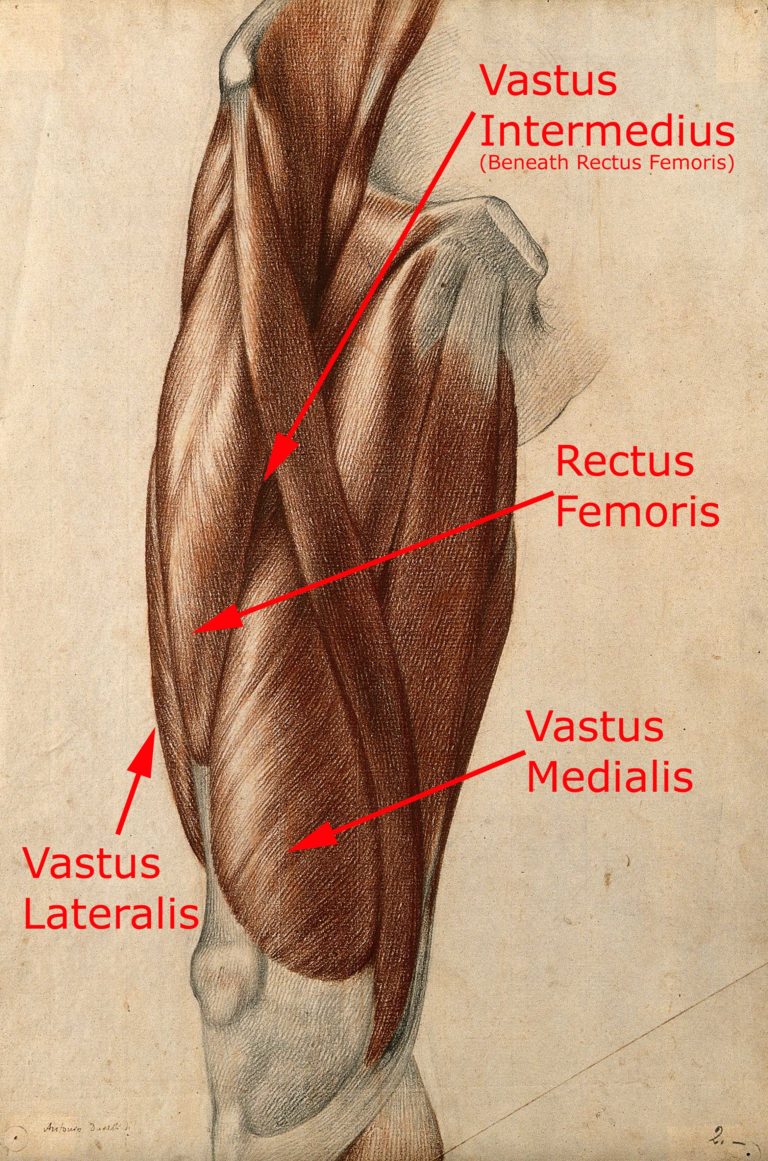
ASSESSMENT TEST:
Lying on your stomach (ideally with one leg off the couch/bed/table), are you able to bring your heel to your butt while keeping your body straight? If it is difficult, you likely need to improve flexibility through more stretching of the quads.
D. Ankles
Ankle dorsiflexion is the ability of the ankle to flex (bend up toward the shin), while plantar flexion is its ability to extend (bend backwards away from the shin). Weak plantar flexors (calves) can increase knee flexion forces (i.e. stress to the knee), while restricted ankle dorsiflexion, most evident with foot strike during running, can cause the foot to overpronate and the knee to cave in, thereby also increasing stress on the knee.
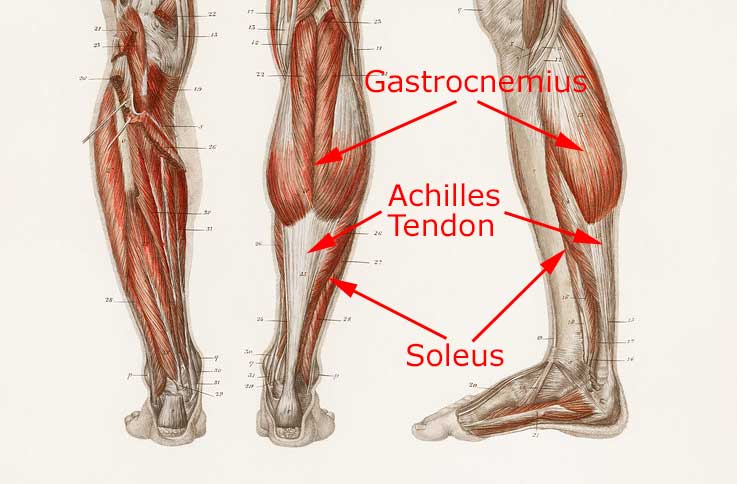
ASSESSMENT TEST:
Can you dorsiflex your ankle 20 degrees? Test this by kneeling forward, seeing how far your knee comes over your toes. It should be at least 3 inches over your toes.
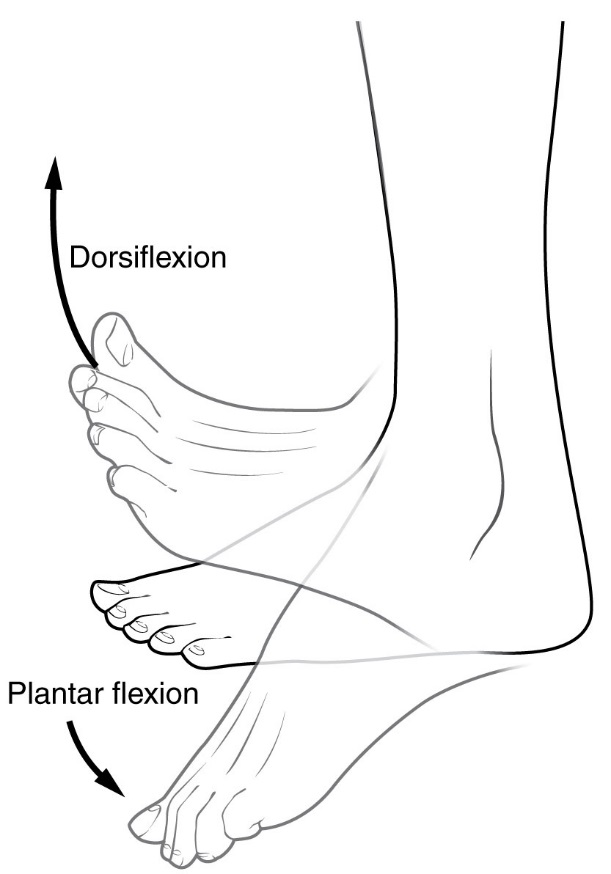
A related culprit can be weak muscles in the inner calf (e.g. soleus), which leads to an increased bend of the knee as the leg proceeds through the stance phase of running.
ASSESSMENT TEST:
Calf Raises
The goal is to reach 25 single leg raises per leg, maintaining the same height. If unable to complete then your calf muscles need to get stronger.
Instructions: Place your toes on a step with heel off of the step. Come up and down, raising straight up in the air without moving forward.
E. Other Risk Factors
- Prior Injury: Not having fully recovered and/or strengthened weakened area(s).
- Training Dynamics: Different running surfaces, speeds, and distances.
- Sleep, Nutrition, and General Recovery: If you don’t eat well, your tissues don’t have the fuel needed to restore muscle.
Still Need Help?
You are welcome to meet virtually with our PT for additional feedback and assessment. Otherwise, continue to the next step to learn how best to manage the pain from your injury.